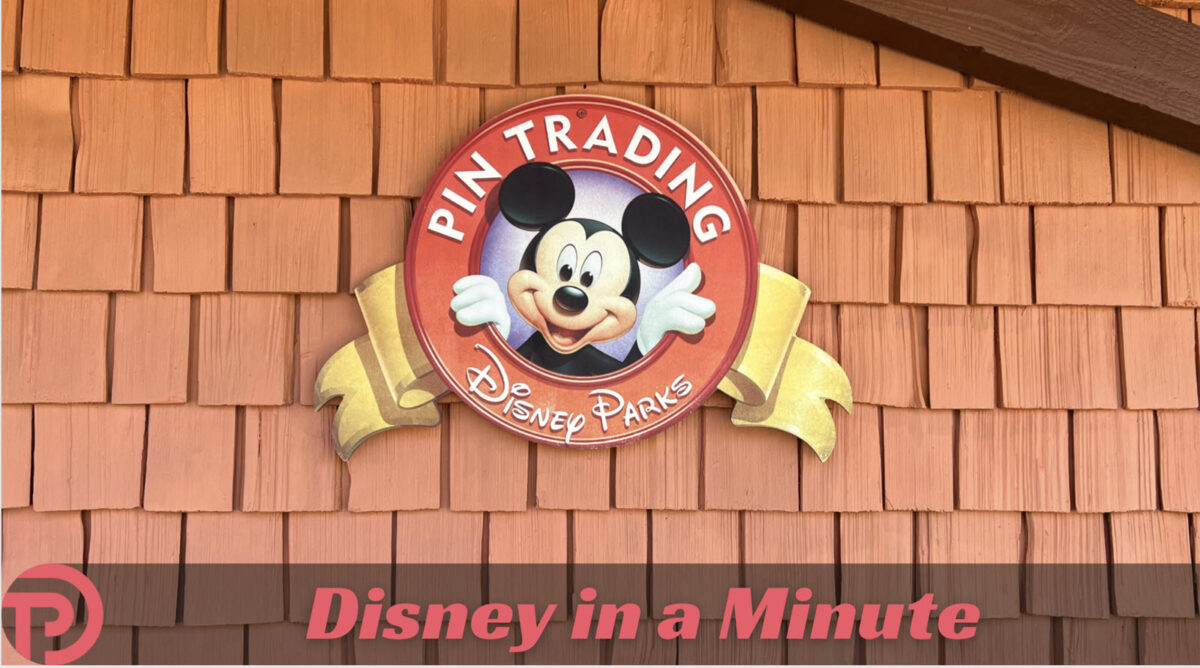
Disney in a Minute: What is Pin Trading?
We’re here with a series of quick posts, “Disney in a Minute,” bite-sized nuggets of information that can better help you understand a Disney term or planning topic. Enjoy!
Virtually every gift shop at Walt Disney World sells enamel pins decorated with images of Disney, Pixar, Marvel, or Star Wars entities. These might be themed to characters, TV or film, or theme park locations. On Disney property, you can purchase individual pins for about $13-18 and pin sets for about $25-40, depending on the size, intricacy, and rarity of the pins.

While there are typically hundreds of designs to choose from, you might not find for sale the exact one you’re seeking. Never fear, another option to acquire pins is to trade, with other guests or with cast members. Guests trade pins from lanyards around their necks (these are also available for purchase in the parks), special padded binder books, or via other forms of display. Pre-pandemic, cast members also traded pins from lanyards. This practice was discontinued during the era of social-distancing and is scheduled to resume at Walt Disney World in mid-April 2024. The alternative, available at many gift shop checkout registers, is a Mickey-shaped bulletin board studded with pins available for trading. (Click photos to enlarge.)
There are many rules related to pin trading. A few highlights are:
- Only official Disney pins may be traded (look for a trademark or logo on the back)
- Pins must be in good condition and traded with a pin backing
- Guests may trade a maximum of two pins per board or cast member per day
- Be polite and always ask before initiating a trade
Guests might choose to trade pins because they’re trying to complete a set, to collect as many pins possible of a particular character or franchise, as a form of socializing, or any number of other reasons.
What have your pin trading experiences been like? Let us know in the comments.











Pin trading used to be a fun activity. Disney utilized blind boxes as a way for people to easily purchase a few pins that they could trade around.
The wheels fell off when entities started providing what is known as ‘scrapper’ pins. These pins are either poor knock offs, wrong colors, or so other indication that the pin is counterfeit. These pins would be sold in bulk on marketplaces like Amazon, Ebay, or Etsy to people (many just looking for a cheap way for their kids to engage cast members while in the parks). The practice has since diluted many cast member lanyards and pin boards with many duplicate pins or pins that are obviously fake. Fake pins destroy the ‘value’ of real pins. It also is a disappointment for a child who may have purchased a legitimate pin with their own money only to find that the pins available for trade are in quite poor quality. While there is an intrinsic value for a coveted pin and its memory, it is a shame that counterfeit pins are rampant in the parks and on the cruise line. It made the hobby less fun for some and downright dishonest for others.